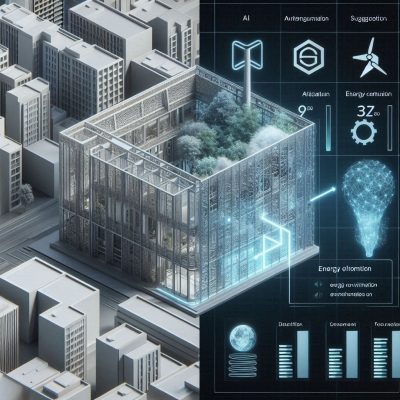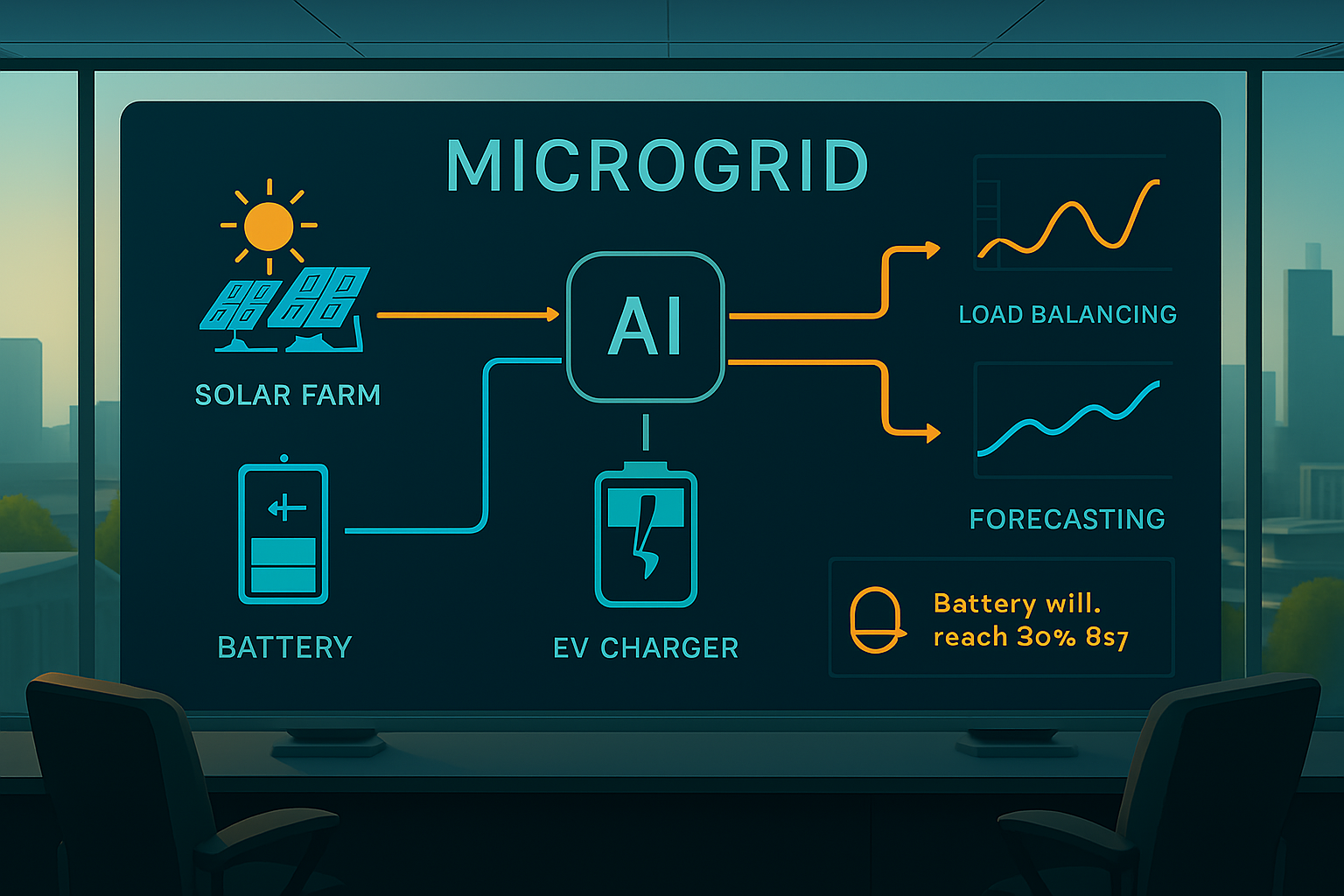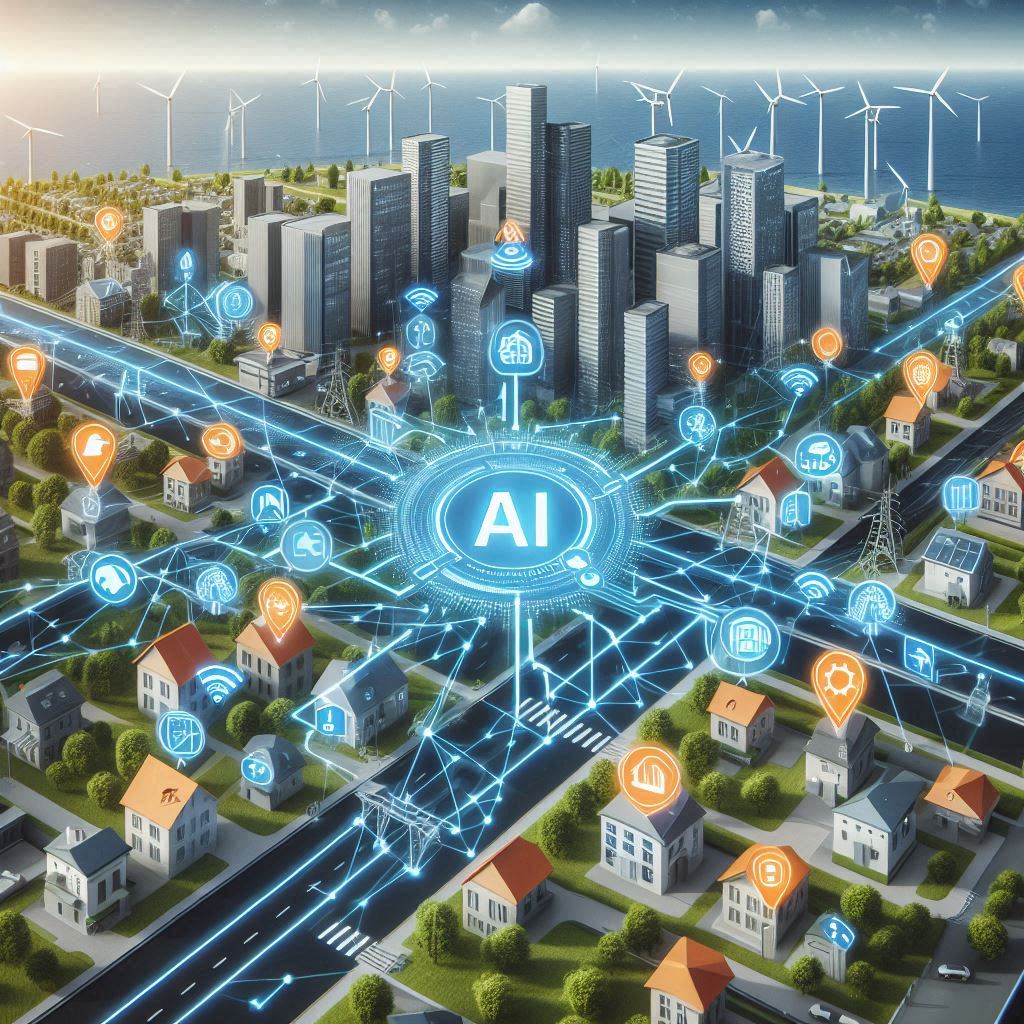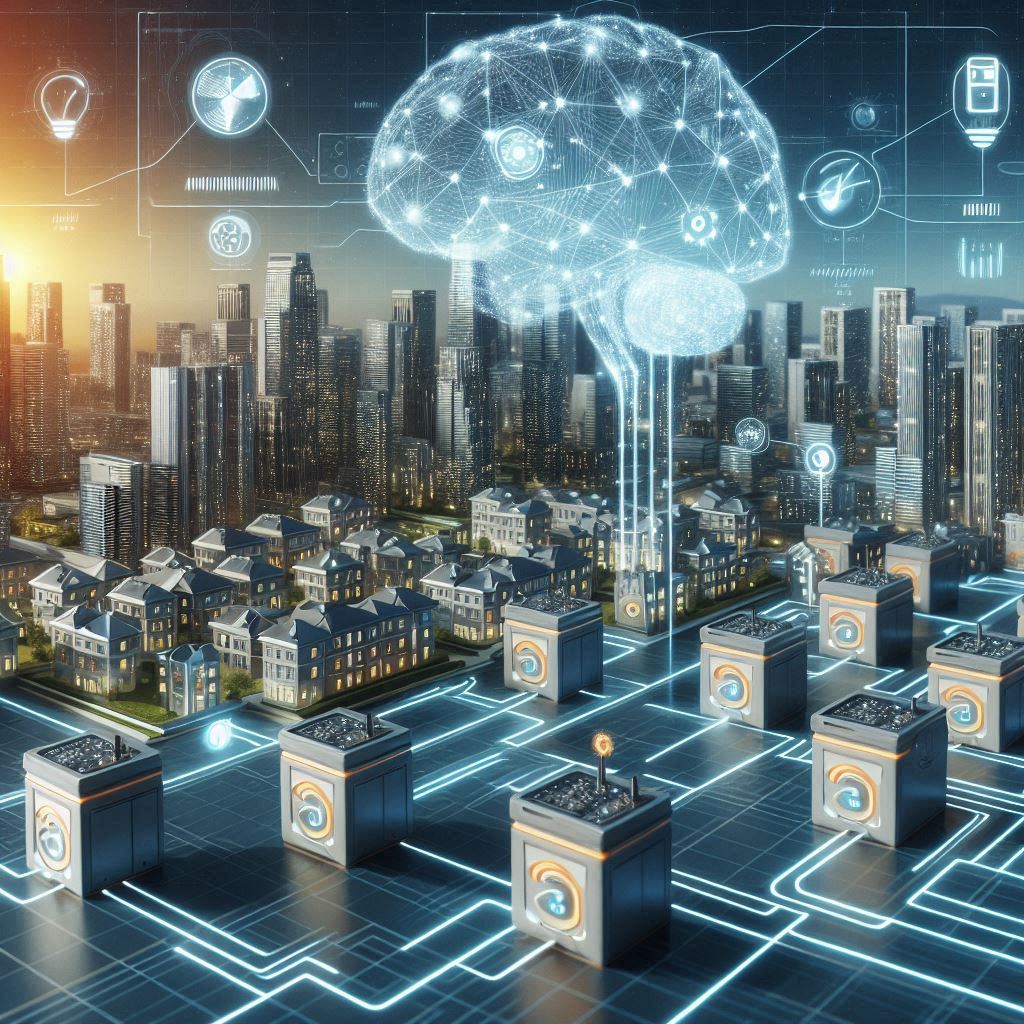
As the world accelerates its shift toward renewable energy, offshore wind farms have emerged as a key player in delivering large-scale, sustainable power. However, designing offshore wind installations presents unique challenges—from selecting optimal locations in harsh marine environments to maximizing energy output while minimizing environmental impact. This is where artificial intelligence (AI) steps in as a game-changer.
AI is revolutionizing how offshore wind farms are conceptualized, designed, and optimized. Through data analysis, simulation, and predictive modeling, AI tools enable engineers and planners to make smarter, faster, and more informed decisions that lead to more efficient and resilient wind energy systems.
In this article, we explore how AI is transforming the design process of offshore wind farms, from site selection and turbine layout to structural design and environmental assessment.
Choosing the right site is critical to the success of an offshore wind project. AI enhances this process by analyzing vast amounts of geospatial, meteorological, and oceanographic data to determine the most suitable locations.
How it works:
Impact:
By narrowing down ideal locations quickly and accurately, developers reduce project risk, cut feasibility study costs, and increase expected returns.
The placement of turbines significantly influences energy yield and maintenance efficiency. AI enables layout optimization by simulating different configurations and evaluating performance.
Key AI functions:
Result:
Improved layouts lead to higher overall energy production and lower operational costs.
AI-powered simulation tools assist engineers in designing foundation structures that withstand ocean forces such as waves, currents, and corrosion.
Applications:
Benefits:
This approach reduces the need for overly conservative (and costly) structural designs while improving long-term reliability and safety.
Sustainability is a top priority for offshore energy projects. AI supports environmental stewardship through real-time monitoring and impact assessments.
Examples:
Outcome:
AI ensures offshore wind farms operate in harmony with marine ecosystems and regulatory frameworks.
Integrating wind power into the electrical grid requires accurate forecasting of energy production. AI models help utilities plan for fluctuating supply from offshore farms.
Capabilities:
Result:
Enhanced grid stability and better alignment between energy production and demand.
Conclusion
AI is reshaping the offshore wind industry by making design and planning smarter, more precise, and more adaptive. From optimizing turbine layouts to minimizing environmental impact, AI enables developers and engineers to tackle the complexities of marine-based renewable energy with confidence.
As offshore wind expands globally, AI will continue to play a vital role in accelerating project timelines, reducing costs, and ensuring a more sustainable energy future. The intersection of intelligent systems and renewable infrastructure marks a critical step toward a decarbonized world.

The global energy landscape is undergoing a fundamental transformation. As the world moves away from fossil fuels and toward cleaner, more sustainable energy sources, the traditional centralized energy grid model is giving way to decentralized energy systems (DES). These systems rely on distributed energy resources (DERs)—like rooftop solar panels, wind turbines, home batteries, electric vehicles, and microgrids—operating in a more flexible and localized manner.
However, managing decentralized energy networks is far more complex than traditional grids. Enter Artificial Intelligence (AI)—a critical enabler of smarter, more adaptive, and more efficient decentralized energy systems. AI makes it possible to balance demand and supply in real-time, optimize energy usage, forecast generation, and enhance reliability in a distributed infrastructure.
What Are Decentralized Energy Systems?
Decentralized energy systems involve producing and storing energy near the point of consumption, rather than relying solely on large-scale, centrally located power plants. Common components of DES include:
The decentralized model supports energy independence, resilience, and sustainability. But it also requires intelligent coordination—something AI is uniquely suited to provide.
How AI Supports Decentralized Energy Systems
Benefits of AI in Decentralized Energy
Real-World Example
In Brooklyn, New York, a pilot project uses blockchain and AI to enable residents with rooftop solar to sell excess electricity to their neighbors. AI algorithms manage pricing, trading schedules, and system balancing—creating a localized, intelligent energy economy.
Challenges and Considerations
Future Outlook
As decentralized energy systems scale up, the integration of AI will become even more critical. Emerging technologies like digital twins, edge computing, and federated learning will further empower local energy networks to operate with autonomy and intelligence.
Conclusion
AI is the digital backbone of decentralized energy systems. It enables a future where communities generate, manage, and share their energy with precision, resilience, and sustainability. As we reimagine the energy grid for the 21st century, AI is not just a tool—it is the brain that makes decentralized energy systems truly smart.

Power plants are at the heart of modern civilization, ensuring the continuous supply of electricity to homes, businesses, and industries. However, these complex facilities operate under high stress and are subject to wear and tear that can lead to costly breakdowns, unplanned outages, and safety hazards. Traditional maintenance methods—based on fixed schedules or reactive approaches—are no longer sufficient for ensuring optimal performance and minimizing downtime.
Enter Artificial Intelligence (AI). By enabling predictive maintenance strategies, AI is transforming how power plants monitor equipment, forecast failures, and streamline operations. This shift not only improves reliability and safety but also significantly reduces maintenance costs and enhances overall plant efficiency.
What Is Predictive Maintenance?
Predictive maintenance (PdM) is a proactive strategy that uses real-time data and advanced analytics to forecast equipment failures before they happen. Instead of performing maintenance at fixed intervals or after a breakdown, PdM identifies when and where attention is needed—maximizing asset uptime and lifespan.
In power plants, predictive maintenance focuses on components such as turbines, generators, transformers, boilers, pumps, and electrical systems.
How AI Powers Predictive Maintenance
Benefits of AI-Driven Predictive Maintenance in Power Plants
Real-World Application Example
In gas-fired power plants, AI-enabled PdM systems monitor turbine blade vibration and combustion temperatures. When abnormal patterns emerge, alerts are triggered to prevent blade failure—a problem that can lead to catastrophic shutdowns and expensive repairs. By acting early, operators save millions of dollars in maintenance and lost generation time.
Challenges and Considerations
Future Outlook
As AI technologies mature, predictive maintenance will evolve into prescriptive maintenance—where AI not only predicts issues but also suggests specific actions to resolve them. Combined with digital twins and edge computing, AI will enable autonomous decision-making and real-time optimization of power plant operations.
Conclusion
Predictive maintenance using AI is a game-changer for the energy sector, particularly in power plant operations. By shifting from reactive to proactive maintenance strategies, power companies can reduce costs, prevent failures, and enhance reliability. In an industry where uptime and safety are non-negotiable, AI provides the foresight needed to keep the lights on—smarter and more sustainably than ever before.

As the global demand for energy rises and the push for decarbonization intensifies, power systems are under increasing pressure to become more efficient, resilient, and sustainable. Traditional energy grids—designed for one-way electricity distribution—are proving inadequate in managing modern energy challenges, especially with the rise of renewables, electric vehicles, and decentralized energy production.
Enter smart grids: intelligent energy networks that use digital technology to monitor and manage electricity flows more effectively. At the heart of these systems lies Artificial Intelligence (AI), which plays a critical role in optimizing grid operations, enhancing energy efficiency, and driving the energy transition forward.
In this article, we explore how AI is revolutionizing smart grid functionality and making our energy systems more efficient, reliable, and intelligent.
What Is a Smart Grid?
A smart grid integrates digital communication and control technologies into the existing power grid, enabling two-way communication between utilities and consumers. It combines data from sensors, meters, and devices to make real-time decisions about electricity distribution, load balancing, and system health.
Smart grids allow:
But managing such complexity requires sophisticated analytics and decision-making tools—where AI excels.
How AI Enhances Smart Grids
Benefits of AI-Driven Smart Grids
Case Example: AI in Grid Operations
In countries like the United States and Germany, utilities are already deploying AI in grid control centers to balance supply and demand more effectively. For example, using reinforcement learning algorithms, operators can optimize substation switching and voltage levels in real time—reducing transmission losses and lowering energy bills.
Challenges and Considerations
The Future: Self-Healing and Autonomous Grids
As AI continues to evolve, the future of smart grids lies in self-healing and autonomous systems. These grids will detect, isolate, and repair faults automatically, and dynamically adjust to load and generation changes with minimal human intervention—maximizing energy efficiency, resilience, and sustainability.
Conclusion
Artificial Intelligence is the brainpower behind the smart grid revolution. By turning real-time data into actionable insights, AI enables smarter, cleaner, and more efficient energy systems. As the world races to meet climate goals and modernize its infrastructure, AI-powered smart grids will be essential in shaping the resilient energy ecosystems of tomorrow.

As renewable energy sources like solar and wind continue to gain traction globally, energy storage systems (ESS) have become vital for balancing energy supply and demand. However, managing these systems efficiently—especially across varying loads, intermittent generation, and changing market conditions—requires more than traditional methods. Enter Artificial Intelligence (AI): a transformative force that’s reshaping how energy storage is modeled, managed, and optimized.
This article explores how AI technologies are revolutionizing energy storage optimization, from real-time decision-making and load forecasting to dynamic pricing and predictive maintenance.
Why Energy Storage Matters
Energy storage plays a crucial role in modern energy infrastructure by:
However, effectively managing when and how to store or release energy is a complex challenge that depends on a multitude of dynamic variables—making AI a natural fit.
Key AI Applications in Energy Storage Optimization
Case Example: AI-Enabled Battery Management Systems
Tesla and other energy innovators are already incorporating AI into their battery management systems (BMS) to regulate charging cycles, prevent degradation, and optimize for specific user needs. For example, AI can prioritize electric vehicle charging during periods of excess solar generation or minimize strain on the grid by discharging power during peak demand hours.
Benefits of AI in Storage Optimization
Challenges and Considerations
The Future: AI and Edge Computing for Storage
The next frontier in energy storage optimization lies in the fusion of AI and edge computing. Deploying AI models directly on hardware near energy assets (such as batteries or substations) will enable ultra-fast, decentralized decision-making—ideal for time-critical applications like frequency regulation and microgrid management.
Conclusion
AI is not just an add-on for energy storage systems—it’s becoming the brain that drives smarter decisions across the entire energy value chain. From predicting usage patterns and pricing volatility to managing battery health and orchestrating multi-node systems, AI empowers energy stakeholders to extract maximum value from their storage assets. In a world increasingly dependent on clean, reliable energy, AI-enabled optimization is not just an advantage—it’s a necessity.